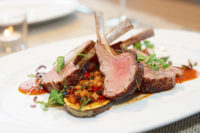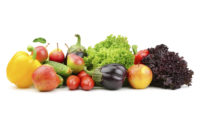Demanding what you want, how you want it and when you want it are hallmarks of Millennials—the 69 million U.S. adults currently age 18-34. Millennials are significantly more likely than adults age 35-plus to like standing out in a crowd, to enjoy making fashion statements and to expect their car to express their own personality. This pronounced proclivity for bold and confident individualism extends noticeably to Millennials' food choices, according to market research publisher Packaged Facts, New York, in a new report titled “Millennial Menus: Culinary Trend Tracking Series.”
In this report, Packaged Facts explores how to cultivate the demanding but trend-setting Millennial generation as culinary consumers by focusing on the Top 5 food trends these young adults are inspiring.
Customization. Today's consumers in general, and Millennials in particular, want food items that are fresh, creative and made just for them. Talk about a game-changer—the Millennial definition of customized, personalized, made-to-order food goes way beyond "white, wheat or rye" to encompass restaurant meals that are bespoke in their entirety. More than a third of Millennials order something different every time they visit a restaurant. What better way to entice them to a restaurant than to offer a mix-and-match dining experience where they can build something different every time?
Mash-ups. Taking up where fusion left off, the sky is the limit for the mash-up trend, including a growing opportunity for consumers to get involved in the creation of the newest crazy-mixed-up food or beverage. Many Millennials are thrill-seeking foodies. They're the target market that food retailers and brands are most seeking to please because where Millennials go, the rest of the world follows. And, nothing else piles it on quite like mash-ups.
Munchies. Ditching the three-meals-a-day standard, Millennials are re-shaping how Americans eat, often opting for several snacks or small meals throughout the day. With 35% of Millennials trending toward snacks as meal replacements, munchies are now expected to be healthful, flavorful and portable. The snack food market offers almost limitless room for expansion, ranging from whole grain crackers packaged with vegetable-based spreads to cricket flour cookies to sippable soups.
Bowls. Burgers may still be king, but bowls are fast becoming the preferred vessel for everything from rice, noodles and salad to quinoa, acai and poké. Whether the ingredients are customized or pre-set, bowls allow for creative expression and plenty of room for healthy ingredients, all within a familiar format. And, as diners continue to look for personalized plates, the build-your-own bowl trend offers an attractive alternative in an assembly-line format. With breakfast and lunch/dinner bowls already becoming a familiar part of the restaurant landscape, snack-size and dessert bowls are ready for their close-up.
Shrubs and digestives. As consumers become more interested in probiotics, shrubs and digestive have taken on new life in the market as beverages, mixers and flavoring agents. For example, the consumer search for healthier alternatives to sugary drinks, which has caused the long-noted decline in traditional soda sales, has led to rekindled enthusiasm among Millennials for drinking vinegars, artisanal tonics and kombucha, launching a segment of the beverage industry that is increasing in volume to match consumer interest.



